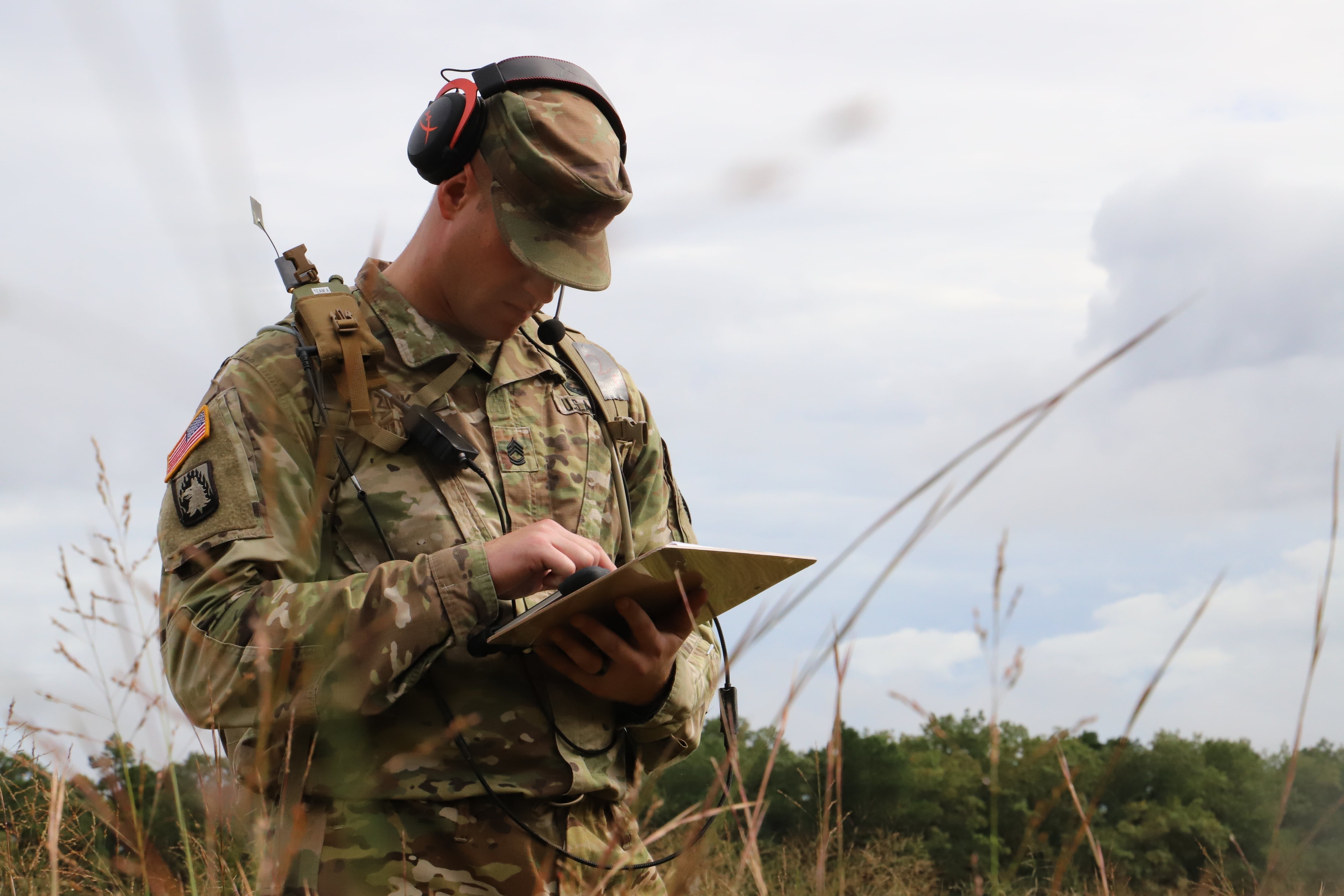WASHINGTON — A burgeoning U.S. Army effort to ensure command posts are suited for fights teeming with sensors and combatants using advanced technology could soon be ready for a demonstration.
While the Mobile And Survivable Command Post project is still in the early stages of development, those closely involved are already eyeing a “significant, fully integrated” exhibition in the fiscal 2026-27 timeframe, possibly as part of the annual Project Convergence exercises.
“Project Convergence is probably in our future,” Tyler Barton, a computer scientist and MASCP project lead with the C5ISR Center, said during a July 21 roundtable with reporters. “Probably not next year.”
Project Convergence is the Army’s capstone test of cutting-edge kit and inter-service communications in furtherance of the Pentagon’s Joint All-Domain Command and Control vision for seamless and speedy information sharing on the battlefield. This year’s event, referred to as PC 22, will for the first time directly involve allies, Australia and the U.K. included.
MASCP is one of several Army ventures meant to modernize command posts, which can be cumbersome to move and produce noticeable amounts of heat, noise and electronic artifacts, making them targetable.
The mobile-and-survivable project digs into the science and technology realms to find solutions. They include remote antenna systems, resilient data storage, enhanced camouflage techniques and materials, and self-sufficient power generation and banking. Considerations must also be made for distance and connectivity; all the speed in the world does not matter if communications and data sharing go bust.
RELATED

“The more mobile and survivable the posture of your command post, the more challenging being effective is, both from a technology and systems standpoint, and just from a human standpoint of being dispersed from the staff you’re used to working with closely,” Barton said.
“The problem we’re seeking to get after is redesigning our command posts to survive competitive threats. That’s the bottom line,” he added. “We have a good understanding now of threat capabilities, how that maps to the vulnerabilities of command posts today.”
Scientists, engineers and other experts tested several preliminary MASCP capabilities this summer at the Network Modernization Experiment, or NetModX, at Joint Base McGuire-Dix-Lakehurst in New Jersey.
Much attention was paid to signature management and mobility. Barton said the testing at NetModX, assisted by industry, “very much benefitted our program.” MASCP will return to the weekslong experiment next year.
“They have resources up there that would be incredibly challenging for us to do without that being set up ahead of time,” he said. “The ranges, the frequency availabilty, the infrastructure, like towers for us to elevate our emitters, spectrum sensors on hand for us to utilize, the integration teams they have up there are all great.”
Colin Demarest was a reporter at C4ISRNET, where he covered military networks, cyber and IT. Colin had previously covered the Department of Energy and its National Nuclear Security Administration — namely Cold War cleanup and nuclear weapons development — for a daily newspaper in South Carolina. Colin is also an award-winning photographer.








